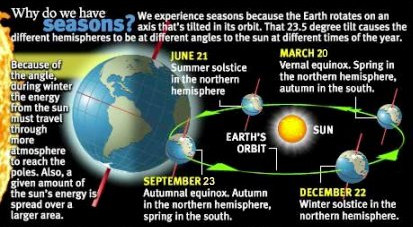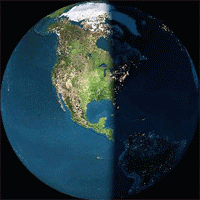Spring officially began this morning at 5:02am MDT. It is during this time, the vernal equinox, that the Earth’s axis is not tilted toward or away from the Sun. As a result equal amounts of the Sun’s light are directed to the Northern and Southern Hemispheres.
Soon after the event this morning one of NOAA’s GOES satellites captured the light on the face of the planet in near perfect equilibrium.

From NOAA:
Mar 20, 2013
GOES Satellite Captures Spring Equinox
It is that time of year again (it happens twice) when the relative angle of Earth is perpendicular to the Sun, causing equal incoming solar energy to the Northern and Southern hemispheres – as well as equal day and nighttime. At 7:02 ET on March 20, 2013, Earth was at its equinox. At 7:45 ET, the GOES-13 satellite captured this full disk image of Earth. The visible imagery sensor on GOES requires sunlight to “see” clouds, and so it provides a useful example of the equinox. In this image the GOES imagery extends to each of the poles since the entire hemisphere is equally lit. After the equinox passes today, the Northern Hemisphere will be more lit than the Southern Hemisphere – causing the seasons. (Note: the Sun in this image is artificially created, though the GOES spacecraft does have sensors continually monitoring the Sun for solar activity.)


